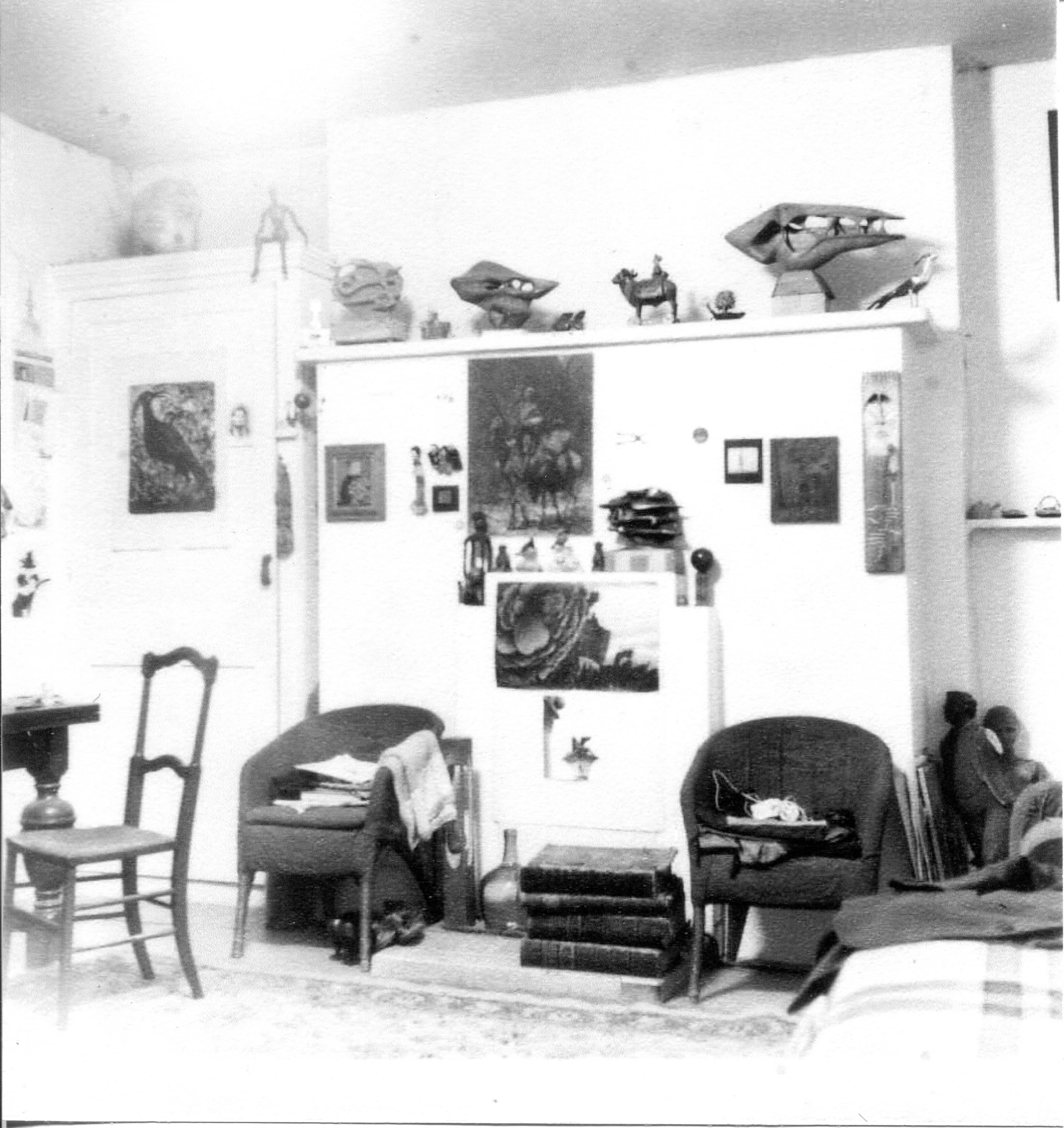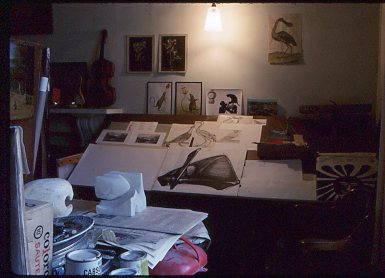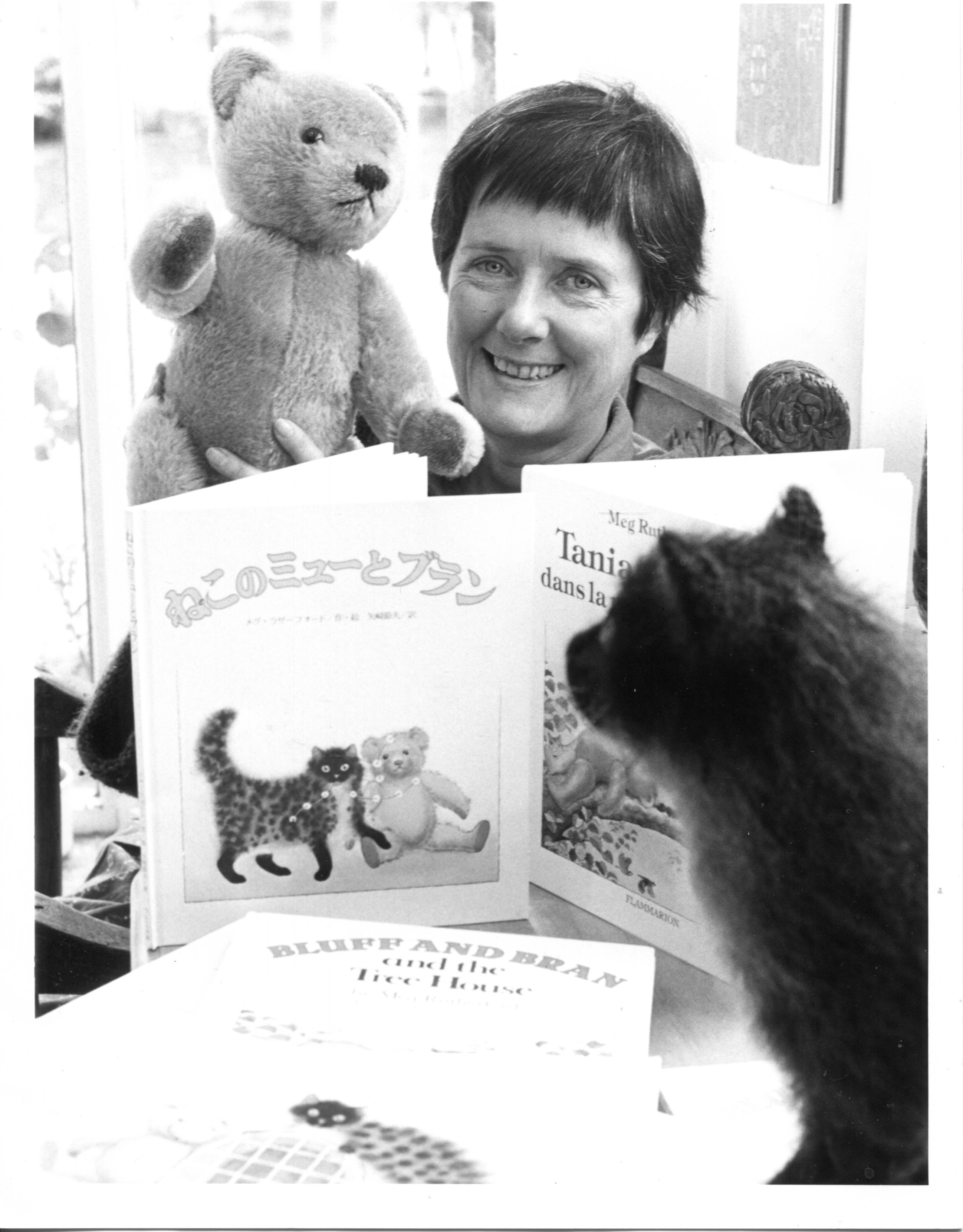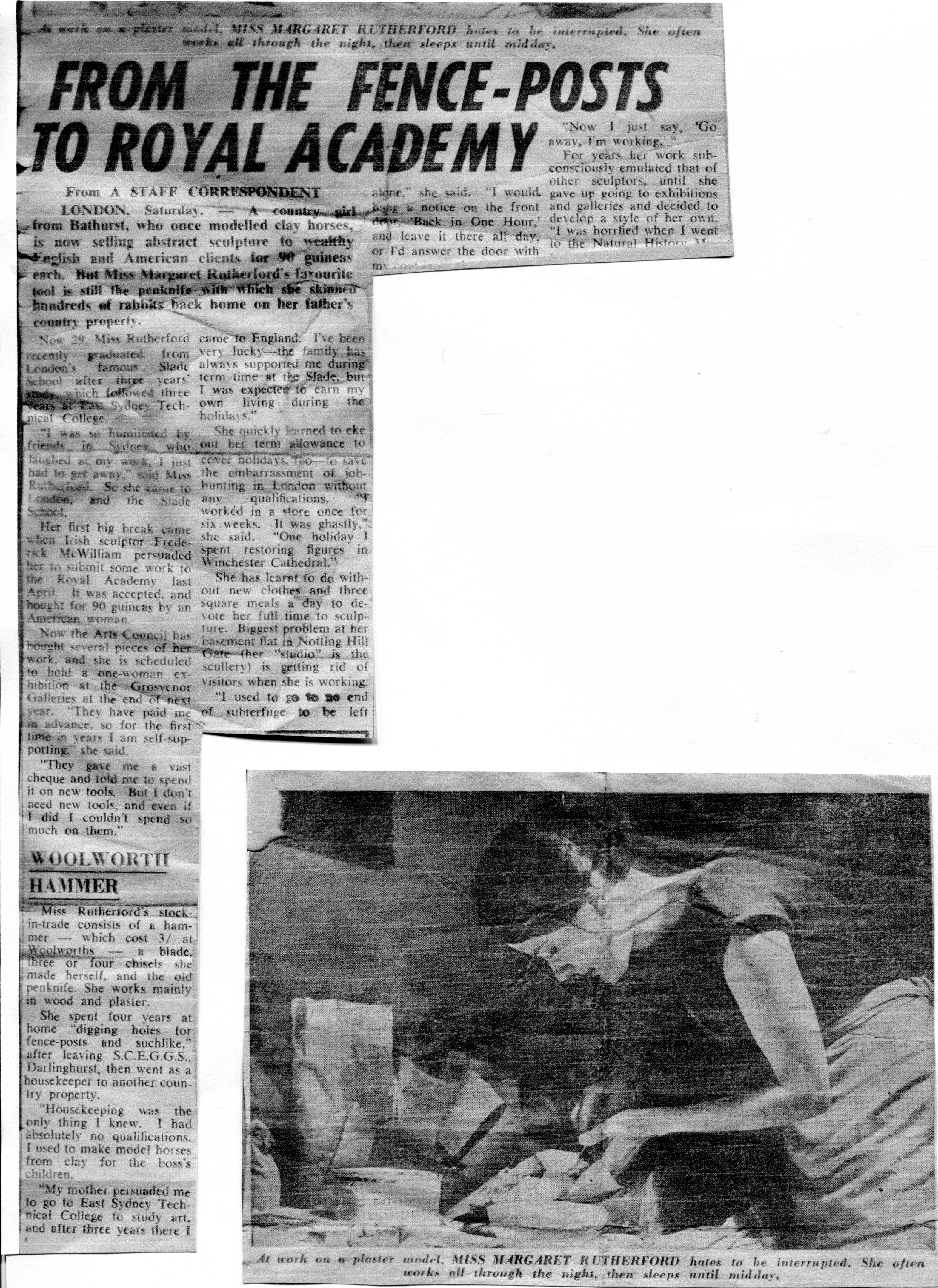Anne Margaret Rutherford – from her time in London known as Meg – was the fifth child of Norman and Joan Rutherford, graziers (sheep farmers), of Bathurst, New South Wales. She was then generally known as Margie. Whilst at school she admitted to being an outdoor type not given to academic work. In common with her two sisters, it was expected she would marry into a farming community in Australia as, unlike her three brothers, she would not receive any property on her fathers death. Meanwhile she toiled on the family's large farm. Finding this not to her liking she advertised for a position as a nanny or mothers help, as she said, because that was the only type of work she knew outside farming.
Early years
Meg showed early talent together with excellent observational skills. She was always drawing and from a young age could draw creatures with realistic representation. At twenty-one she got her job as a Mothers Help to three young sisters in a farming family. Here she used to make objects for the girls for example by carving wood or shaping local clay. Her talent with her hands was recognised by the parents and it was they who suggested sculpting as a career. The three sisters wrote after Meg's death Margie could draw flowers perfectly. She also showed us how to model clay. Many decades after that job, Meg wrote that when she was a little girl Crocodile skeletons hung everywhere at her home, they were usually very beautiful, and my interest in sculpture must have started then.
Her art training was as a sculptor, initially at the National Art School, Sydney from which she gained her diploma. She then took a ship to UK and applied to the The Slade School of Fine Art in London from which she graduated. She never returned to Australia except for a couple of short visits. She married and worked for the rest of her life in England.
Beyond sculpture
For some years, in order to earn a living, Meg mended antiques, as sculpture produced only slow or limited returns. She also produced a book, The Beautiful Island that she illustrated in collage using mainly old 19th century engravings. Then came the time she felt she had done all she could in sculpture. Luckily, a friend asked Meg to illustrate her book, Myths and Legends of the South Seas. She did not look back after that and spent the next thirty -five years or so as a successful illustrator with involvement in seventy-eight books, some of which she also wrote. The Imaginative Book Illustration Society published a detailed bibliography in 2010 of the books Meg Rutherford illustrated. Sadly, she was no longer alive to see this.
With the income she earned from her illustrating Meg was able to tackle other crafts over the years. She could get her hands to do almost anything she wanted, such as spinning, knitting, glass blowing, leaded stained glass work, bead making, fretwork, modelling. She also took up photography in later life, which required a very steady hand by contrast to her other skills.
With all of these, her creativity and imagination showed through.





